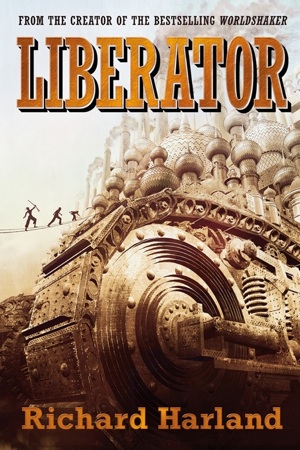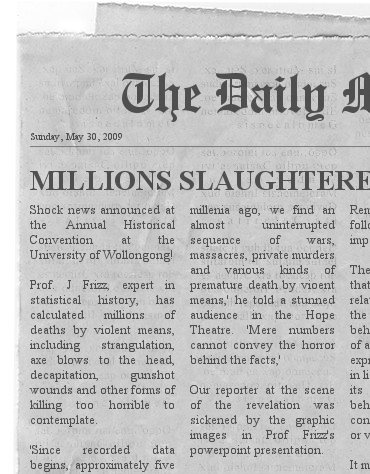3. Climax & After
The climax should be the easiest part of the novel to write. If you’ve set everything up well, it almost writes itself.
 I think of it as the toboggan ride, the downhill glide. This is my favourite part of the writing process, even more enjoyable than the early planning stages, which I also love. I think of it as the toboggan ride, the downhill glide. This is my favourite part of the writing process, even more enjoyable than the early planning stages, which I also love.
For me, Liberator was a turning point - the biggest glide I'd ever experienced. Usually, the story takes over about three quarters of the way through, but with Liberator, the downhill glide started before I was even halfway through. Maybe it's because this is a novel that gets into its climax very early--and just keeps on rolling and rolling all the way to the end.
Or maybe it's me, because the same thing happened with Song of the Slums, my latest steampunk novel. The climax there doesn't really start rolling until after the band arrives for their ultimate triumph in London Town. So maybe it's because I can see and sense the climax coming from half way through, I can start letting the story take care of itself because I feel more confident in the way I've set it up. Here's hoping!
The other side of the coin is that, if your climax keeps blocking and snagging, then it’s probably not just the climax you need to revise, but everything that leads up to it. Problems at the climax usually stem from unnoticed problems in the middle. At least, that’s my experience.
I’m not saying you should plan towards a climax from early on. I used to try that for my first few novels, and it had the opposite effect. I was always having to go back and revise. Now I rely on gut feeling. I know when I’ve got the material for a good, powerful climax, even though I can’t tell exactly how it’ll pan out.
I guess stories in novels work the other way round to reports in newspapers. The first two sentences of a newspaper report give the central facts, the next two paragraphs give the less important facts, and the remaining paragraphs fill out the smaller details. From most important to least important …
 That’s the natural sequence for telling things in real life too. First. ‘There was a car crash on Hudson Street! I think someone was killed!’ Then ‘It was a truck and a car. There was glass and blood everywhere. I saw the ambulance come. The car was mashed in like you wouldn’t believe.’ And finally, perhaps, a run-through of all the events in order. That’s the natural sequence for telling things in real life too. First. ‘There was a car crash on Hudson Street! I think someone was killed!’ Then ‘It was a truck and a car. There was glass and blood everywhere. I saw the ambulance come. The car was mashed in like you wouldn’t believe.’ And finally, perhaps, a run-through of all the events in order.
By contrast, good storytelling in a novel withholds. The author doesn’t blurt out all the best bits as soon as possible, but keeps the reader waiting, in suspense. And isn’t this the mark of a good oral storyteller too?
I believe in holding some material in reserve for a powerful climax. You don’t want to approach the end of a novel in a state of exhaustion. You don’t want to discover you’ve already used up all your most evocative settings, your most effective twists of character, your most exciting action, etc etc.
Keep some good stuff back for the climax!
|





